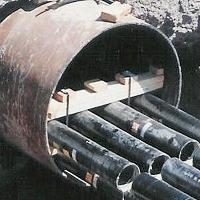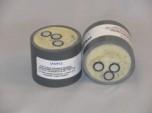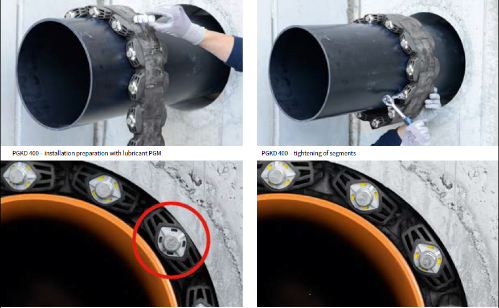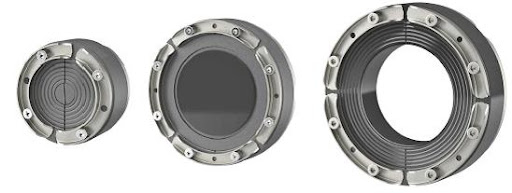Climate Change and Electrical Engineering
How Climate Change has Effected Electrical Construction
You probably don’t need the National Climate Assessment to tell you that the number and severity of major weather events like heatwaves, rain downpours, ice storms, tornados, hurricanes, and wildfires caused by drought, have substantially increased. Each one of these events presents a threat to our electrical infrastructure. Power outages and loss of digital communications are not only an inconvenience and a threat to public health and safety, but they are also a major disruption to businesses costing the economy hundreds of billions of dollars. Climate Central states that 80% of power outages are caused by weather events.
Therefore, electrical engineers are developing strategies to “Harden the electrical grid” to provide more reliable and resilient electrical and communications services. These new designs not only make the system less vulnerable to weather-related outages, but they will also reduce the time it takes to restore power after the outages occur.
Underground Power Lines
Running power lines underground is still the most common weatherproofing technique for electrical systems. Running power and communications lines underground insulates them from wind, ice, and tree damage.

Conduits
An important part of the underground system is the conduit that protects cables and wires, including transmission lines. PG&E Corp. plans to bury 10,000 miles of power lines to reduce wildfire risk throughout Northern California. Conduits used below-ground can be made of many types of material. But fiberglass conduit offers more benefits and safety because of its high dielectric strength. UL-listed Fiberglass conduit can carry transmission lines up to 125 KV. Fiberglass conduit also has a lower coefficient of friction than PVC. Therefore, the cable can be pulled farther, and fewer pull boxes are required. Plus, it is resistant to electrical faults, so the electric wire does not melt or weld to the conduit facilitating easy repairs. Other benefits of fiberglass conduit include its resistance to many chemicals, corrosion, and rodents.
While buried conduits are safe from wind, ice, and tree damage, they are not completely weatherproof. Buried lines are vulnerable to flooding. Flooding causes more economic damage than all other types of weather. Water penetration causes costly damage that is difficult to repair. Prevention of water penetration is essential in new construction or an upgrade. Durable sealing methods provide protection and play a vital role in a comprehensive system hardening program. The sealing method used to reduce or eliminate water varies from site to site. These mitigation strategies are easily cost-justified by saving on the cost of vital energy disruption and equipment restoration.
Sealing Methods
There are a variety of situations that require different sealing methods. For example, conduits, wall penetrations, and wall cracks are scenarios that present a variety of substrates and shapes. Conduits often pass through the outside wall of a building or electrical vault at an underground level. So both the outside and inside of the conduit must be sealed.
The water may be flowing into the enclosure or building through the electrical conduit. Some sealants are formulated to be installed even when water is present. Seals must be compatible with other environmental factors like water, salt, corrosive material, or solvents. There are also these factors to consider: working temperature, vibration, or flexing.
Conduit Sealants
Conduit sealants come in many forms. There are advantages and disadvantages among sealant choices, which we explain below:
- Mastic putty is a low-cost sealant with limited sealing performance. It doesn’t hold water or air pressure. And tends to sag and deform.
- Cement/mortar, grout, and Plaster of Paris require water for onsite mixing. This also has an extended set time.
- Pre-engineered mechanical seals resist high water head and gas pressure, are easily removed, and help support cables. But, they can be challenging to install on a complex cable or high-conduit-fill configuration.

- Closed-cell expanding foam readily adapts to varied configurations, removes easily for future access, and offers robust chemical resistance. Foam selection is key, as the chemistry varies.
Water may also leak into the electrical vault around the outside of the underground conduit. Mechanical link style seals are engineered to be flexible, resilient in tough conditions, and guaranteed to be watertight, gastight, and airtight, so there is no return service call to re-tighten the nuts.
 “Did I install it correctly?” is the most commonly asked question when using a mechanical style product. Some seals give you an “installed right” indicator. This gives the property owners the added peace of mind and security that the seal has been installed properly. Electrical crews also appreciate having the nuts molded into the pressure plate, a design that greatly reduces the risk of lost parts. Plus, no torque wrench is required.
“Did I install it correctly?” is the most commonly asked question when using a mechanical style product. Some seals give you an “installed right” indicator. This gives the property owners the added peace of mind and security that the seal has been installed properly. Electrical crews also appreciate having the nuts molded into the pressure plate, a design that greatly reduces the risk of lost parts. Plus, no torque wrench is required.
 Mechanical seals with segmented ring design are a faster and easier method of sealing the outside diameter of the conduit, over mechanical link style products. The segmented ring technology allows you to fit various outside dimensions of conduit or cable with one seal in your field inventory. It also provides the installer optical and tangible security through the integrated control opening.
Mechanical seals with segmented ring design are a faster and easier method of sealing the outside diameter of the conduit, over mechanical link style products. The segmented ring technology allows you to fit various outside dimensions of conduit or cable with one seal in your field inventory. It also provides the installer optical and tangible security through the integrated control opening.


